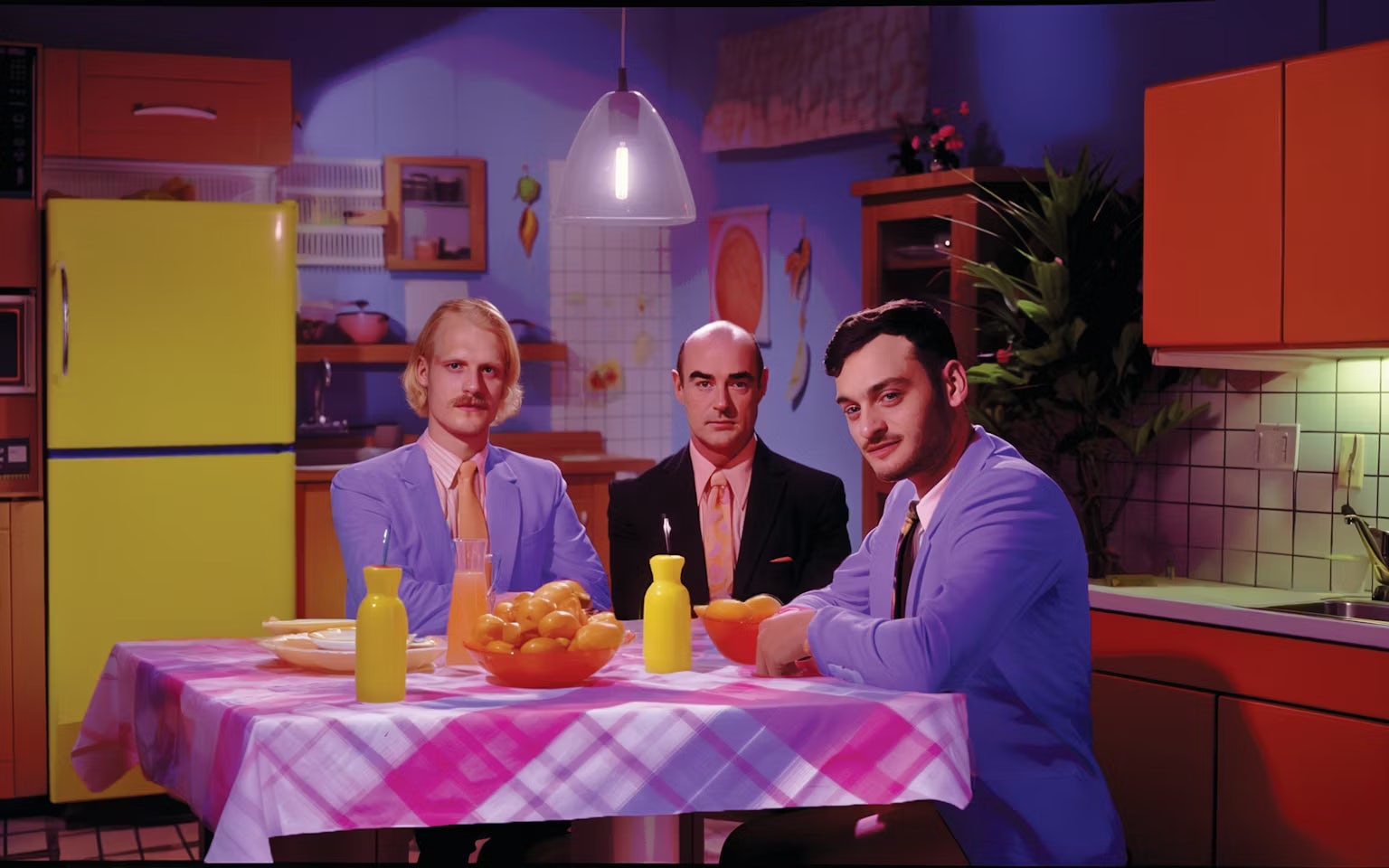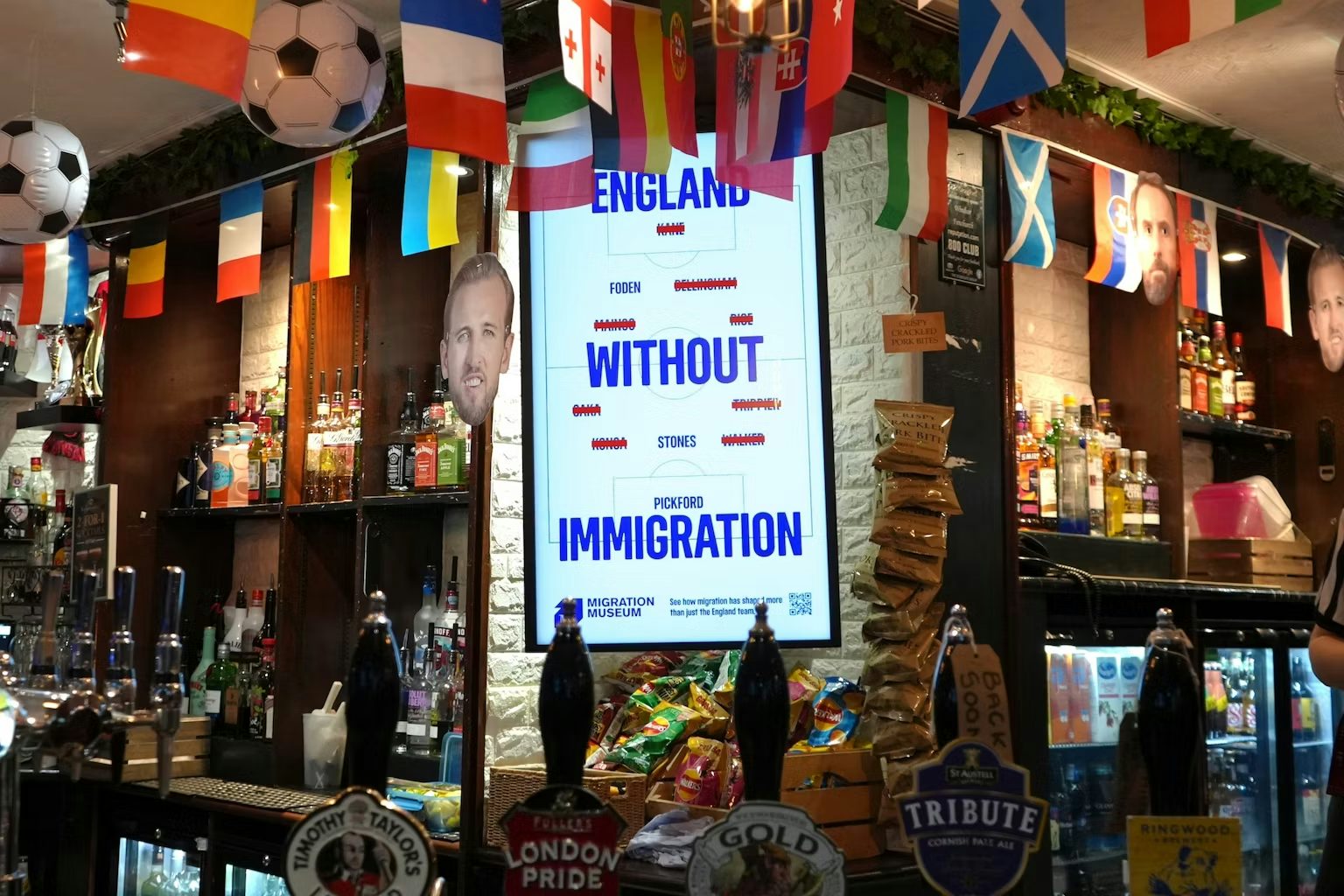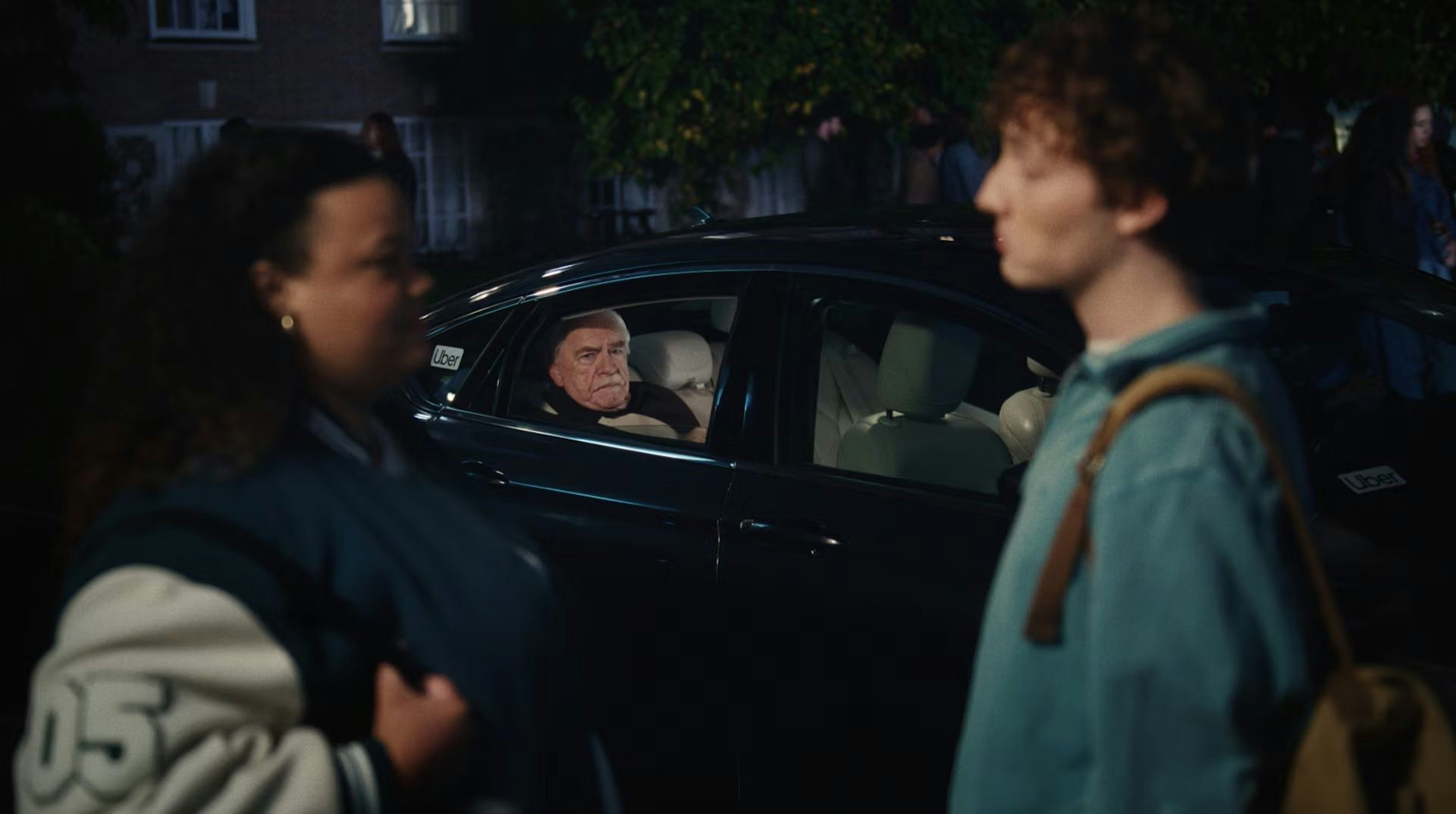Trends of 2024: The year in advertising
In a turbulent year for the advertising industry (and the world in general), we saw controversy, celebrities, AI drama and lots of lots of sports ads
There are glimmers of hope that 2024 was the year the advertising industry turned its luck around as, according to GroupM’s end-of-year forecast report, it is projected to surpass $1 trillion in total revenue for the first time (thanks to global elections and a huge year of sports).
It hasn’t been an easy ride, however. Agencies have had to grapple with smaller budgets for more work and rethinking how they operate in the modern world, whether this means in-housing services, merging agencies or cutting thousands of hard-earned jobs. Yet while it was far from a premier year, in 2024 the creative industries did produce countless ingenious ads worth writing home about – though not without controversy.

ALL CHANGE AT AGENCIES
Given the challenging market, it’s no surprise that agencies had to rethink how they worked in 2024, with industry commentators deeming the traditional ad agency model outdated.
Several well-known agency brands were swallowed up to make brand-new full-service agencies. Creative shop The&Partnership and its sister media shop mSix&Partners merged to form T&Pm (T and P to the power of M). And Creature was another agency name that ceased to exist after Candid merged it with Positive UK and Positive Netherlands (including TikTok agency Dunkd) to form Modern Citizens.
In a merger to trump all mergers, Omnicom (home to DDB, BBDO and TBWA) ended the year with the news it has acquired New York-based holding company Interpublic (McCann, FCB and Mullenlowe) to create a mega holding group, billed as the world’s largest advertising agency business. And, proving they’ve still got it, James Murphy and David Golding sold New Commercial Arts to WPP, 12 years after they flogged their previous agency adam&eve to Omnicom.
Mother broadened its offering by continuing to invest in new creative startups, including Run Deep, a sport and entertainment creative and strategy agency, and Small World, a company that devises the right team to answer specific briefs for clients. These join Mother Design, Media by Mother, Broody, The Or, The Romans and Dream Reality Interactive (DRi) in the Mother family.
As the agency model evolves, some advertising and design agencies are questioning the payment structures and looking to ditch the timesheets, believing that billing by the hour is an outdated way of paying creatives for their specialities.

NEW AGENCIES GALORE
Plenty of new independent agencies also cropped up across the industry, many formed by renowned senior figures. This partly responds to a redundancy spike, as well as a desire to try different models of working.
In the UK, Laura Jordan Bambach teamed up with Hannah Matthews and Fern Miller to form the all-female, AI-focused startup Unchartered Studio; Grace Francis, Jamie Mancini and Katy Collins formed indie creative shop Wonderful Things; Matt Goff and Mike Wilton launched creative shop Ark Agency; Sachini Imbuldeniya got back together with her former creative partner Darren Smith to open content agency House of Oddities; and Dom Goldman opened You’re the Goods. But the biggest jawdrop went to adam&eve/DDB’s powerhouse team Richard Brim and Martin Beverly, who left to set up their own business (more details due next year).
Across the pond we saw more of the same, including Ari Weiss, formerly CCO at DDB, founding Quality Experience; and three former Wieden+Kennedy execs, Ryan O’Rourke, Alberto Ponte and Dan Sheniak, opening their own ad agency, Someplace.
TV, FILM AND ADVERTISING GOT CLOSE
Perhaps it’s the aftermath of the 2023 Writers Guild of America strike or actors don’t get paid enough, but lots of talent went back and forth between the lands of television and film and its nearby neighbour, advertising.
It started with The Bear star Jeremy Allen White’s tighty CK whiteys, which heated up a cold January. (White underwear proved to be a theme in 2024, as Beyoncé also offered her version of Levi’s famous 1985 Laundrette ad.)
Meanwhile, Brian Cox is still capitalising off Logan Roy, the famously dictatorial media mogul in Succession, making some sweet, sweet ad dollars. For Asics, he delivers an anti-Logan Roy message about the real threat to our mental health in the workplace: being tied to your desk. Then Cox enrolled as a freshman for Uber One (though he’s only in it for the perks) in a funny spot directed by David Shane.
It wasn’t just big-time celebrities that were attracted to advertising this year; top directors got on board. Not his first advertising rodeo, Taika Waitiki shot Disney’s holiday campaign about a young boy and his pet octopus, which proved a hit with more tender viewers. Wes Anderson also took a quick break from his quirky films to serve up his trademark stylised aesthetic and offbeat storytelling for Montblanc (even making a cameo himself).
Steve McQueen was called in to shoot PG Tips’ first campaign in eight years, where he captured Top Boy actor and member of British garage group So Solid Crew Ashley Walters, who was having a pep talk with himself over a brew. And The Bear creator and showrunner Christopher Storer directed a spot for Coca-Cola in his specialism – a complicated household setting – as a new boyfriend meets his partner’s family for the first time.

On the flip side, directors who honed their craft in advertising made the glamorous jump to TV and film. Dougal Wilson, whose top advertising hits include the Channel 4 Rio Paralympics campaign, Three’s dancing Shetland pony and John Lewis’ Monty the Penguin, landed the greatest gig in filmland: directing Paddington 3 after Paul King moved on.
And there was a moment in February when you couldn’t move for people talking about Netflix’s version of David Nicholl’s One Day with Ambika Mod and Leo Woodall. Molly Manners, behind ads for McDonald’s, Channel 4 and Koppaberg, was key to its success, acting as associate producer and lead director of the series.

SPORTS CRAZY
2024 proved very entertaining for sports lovers. The 16-year-old darts prodigy Luke the Nuke brought new crowds to the sport, and cycling wonder Tadej Pogačar stormed the Tour de France. Even those who typically object to the regular programming of Premier League football found themselves screaming for their *insert country* in a tightly packed pub or bar as the Euros 2024 unfolded. Not to mention the Paris Olympic and Paralympic Games, which were heralded a great success despite the washed-out opening ceremony.
As the crowds went wild, brands went sports crazy. The BBC’s Euros film, a craft spectacular, did not disappoint, while Nike and Wieden+Kennedy London served up unhinged vibe with its own Euros campaign.
But the Euros also delivered more thoughtful campaigns too. British Heart Foundation and Saatchi & Saatchi stopped people in their tracks with 12 murals, each dedicated to young football fans who had died of heart disease, and the Migration Museum and Wonderhood Studios set tongues wagging with a poster highlighting what England’s starting line-up would look like without migration.
Then came the Paris Olympic and Paralympic Games. Amongst a deluge of ads, highlights included Nike and Wieden+Kennedy’s divisive film positioning sportspeople as ruthless and Simon Landrein’s illustrations for Apple, introducing the Olympics sports and all drawn on an iPad … of course.
Channel 4 and 4creative once again delivered for the Paralympics. Always highly anticipated, the new ad Considering What? was another masterpiece, this time reflecting changing attitudes to disability. Similarly setting the bar high was Orange France, which followed its Cannes Lions-winning women’s football ad with a spot that highlighted moments when Paralympians had achieved faster times than their Olympic counterparts.
BRANDS DROPPED MUSIC VIDEOS
Agencies continued to turn to the trusted music video in the hope of producing an earworm single that would lodge their brand’s name into our collective subconscious. Tombolo and Meanwhile dropped Open For Fun, a pumping track written by The Midnight Beast which flags all the random moments of downtime that are well suited to a spot of bingo.
Orchard Creative and Quilted Northern reimagined the 80s classic We Built This City with a fresh take, renamed catchily as We Quilt This City, while UK supermarket Lidl tapped into hun culture and campness with (Ooh Aah) Just a Lidl Bit, fronted by Martine McCutcheon. Then within days, Waitrose released another banger that saw S Club partying down its aisles to a reimagined version of You’re My Number One. Is this a sign that advertising is shaking off its 90s obsession in favour of some noughties nostalgia instead?
IT WASN’T ALL FUN AND GAMES THOUGH
Alexa, play Controversy by Prince. Rightly or wrongly, plenty of people were positively horrified by brands (and ad industry bodies) in 2024 and went to great lengths to air their views publicly.
The Advertising Standards Authority had a bad start to the year following its decision to ban a Calvin Klein poster featuring a scantily clad FKA twigs, when Jeremy Allen White and Kendall Jenner’s ads for the same brand were deemed OK.
“In light of reviewing other campaigns, past and current, of this nature, I can’t help but feel there are some double standards here,” wrote FKA twigs to her Instagram followers in response to the ruling. Despite all the claims of body positivity and female empowerment in recent years, this felt like a huge step back.

This could be seen as the year of the brand apology as Apple was forced to grovel when its iPad ad went down the wrong way, with people horrified that it dared to crush analogue creativity with a giant metal press. Then, in pretty quick succession, adidas made numerous apologies for an ill-judged campaign starring Bella Hadid, and Heinz said sorry twice, for two separate campaigns, both accused of containing racist stereotypes.
Then came Burger King’s campaign, which presumably the brand hoped would be positively received as an authentic ode to well-deserved grub after childbirth, but which soon rallied the keyboard warriors into action. Created by BBH London, it featured a series of real-life images and video footage of mothers devouring a Whopper post-birth, causing complaints ranging from exploitation of childbirth to the unhealthy nature of the food.
The anti-woke brigade was also at large in 2024, enraged by anything with a whiff of diversity. A boycott was called for Boots when its Christmas spot by VML featured transgender pronouns and a Black Mrs Claus. And Jaguar’s rebrand, guided by a ‘Copy Nothing’ ethos, went down like a bright pink lead balloon.

RAGE AGAINST THE MACHINE, OR WITH IT?
Other controversies raged due to artificial intelligence. As adland grappled with how to best to handle the onslaught of AI, some chose to embrace the emerging technology with open arms. Coca-Cola turned up to the Christmas ad party with an AI-generated version of its famous Holidays Are Coming campaign; Apple gave it a go with a series of ads promoting its Apple Intelligence AI-powered assistant tools; and Google’s Olympics ad told the tale of a young girl who uses Gemini (Google’s version of ChatGPT) to draft a fan letter to US Olympian Sydney McLaughlin-Levrone. To say the ads didn’t go down well would be an understatement, with the latter being pulled from Olympic broadcasts.
In response, other brands embraced craft, with Uncommon going the extra nautical mile to avoid using technology in a spot for Avios; while Etsy and Orchard expertly responded to the AI furore with a spot that reinforced the online marketplace’s commitment to ‘keep commerce human’.
These backlashes are unlikely to dampen agencies’ enthusiasm for AI, however, and looking ahead to 2025 the tech is perhaps the one thing that we can guarantee will feature in next year’s trends lists too.




